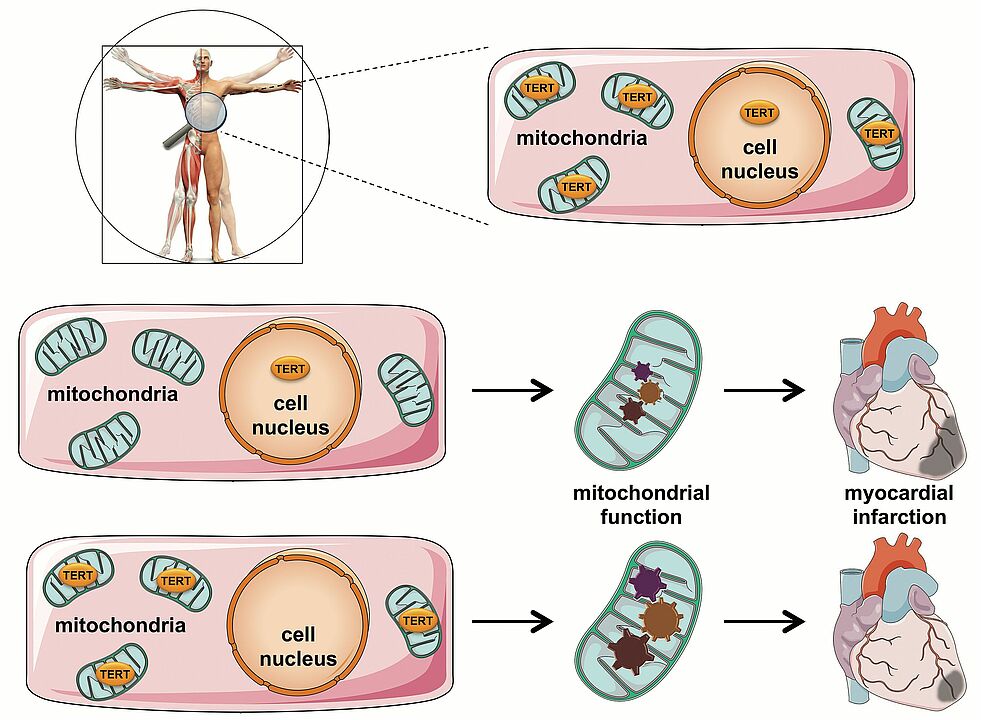In the cell nucleus, TERT is a component of the so-called "immortality enzyme" Telomerase, for the discovery of which the Nobel Prize in Physiology or Medicine was awarded in 2009. Meanwhile, it has been shown by the two research groups at HHU, that TERT is also present in mitochondria in the cells of the cardiovascular system. However, until now it has not been possible to clearly distinguish between its functions in these two cell organelles.
For this purpose, Prof. Haendeler and Prof. Altschmied have generated worldwide unique mouse models in which the protein is present in all body cells either exclusively in the nucleus or in the mitochondria. WIth these they were able to demonstrate that mitochondrial, but not nuclear TERT improves mitochondrial function in the heart and reduces the damaged area after a heart attack. This is also reflected in the recovery of cardiac function after infarction. Cardiac muscle cells benefit from the increased mitochondrial function and are protected from cell death. Other cell types also profit from increased mitochondrial function such as fibroblasts, which are essential for stable scarring after an infarction, and endothelial cells, which are needed for vascularization and thus blood supply in the infarct area.
Based on these findings, therapies that increase the amount of TERT in mitochondria appear to be useful in achieving a better healing process after a heart attack. Such an effect occurred in heart tissue of bypass patients after a pressure cuff therapy during which a conventional blood pressure cuff placed on the patient's upper arm is inflated several times in a specific rhythm, which improves mitochondrial functions. First cell culture experiments indicate that an increase in mitochondrial TERT levels can also be achieved by using a plant substance approved as a dietary supplement.
Publication:
Niloofar Ale-Agha, Philipp Jakobs, Christine Goy, Mark Zurek, Julia Rosen, Nadine Dyballa-Rukes, Sabine Metzger, Jan Greulich, Florian von Ameln, Olaf Eckermann, Klaus Unfried, Fedor Brack, Maria Grandoch, Matthias Thielmann, Markus Kamler, Nilgün Gedik, Petra Kleinbongard, Andre Heinen, Gerd Heusch, Axel Gödecke, Joachim Altschmied, Judith Haendeler; Mitochondrial Telomerase Reverse Transcriptase Protects from Myocardial Ischemia/reperfusion Injury by Improving Complex I Composition and Function, CIRCULATION (2021) online ahead of print
https://doi.org/10.1161/CIRCULATIONAHA.120.051923
Individual image elements are from the Servier Medical Art collection, which is licensed under a Creative Commons Attribution 3.0 Unported License.
Please contact:
Prof. Dr. rer. nat. Judith Haendeler:
apl. Prof. Dr. rer. nat. Joachim Altschmied:


